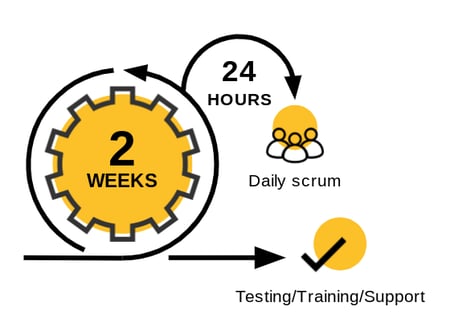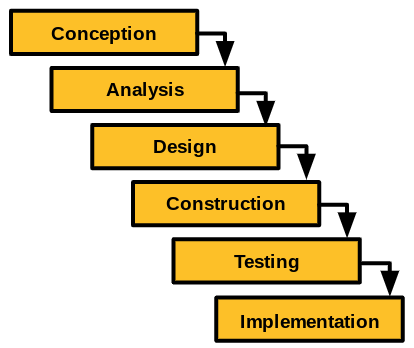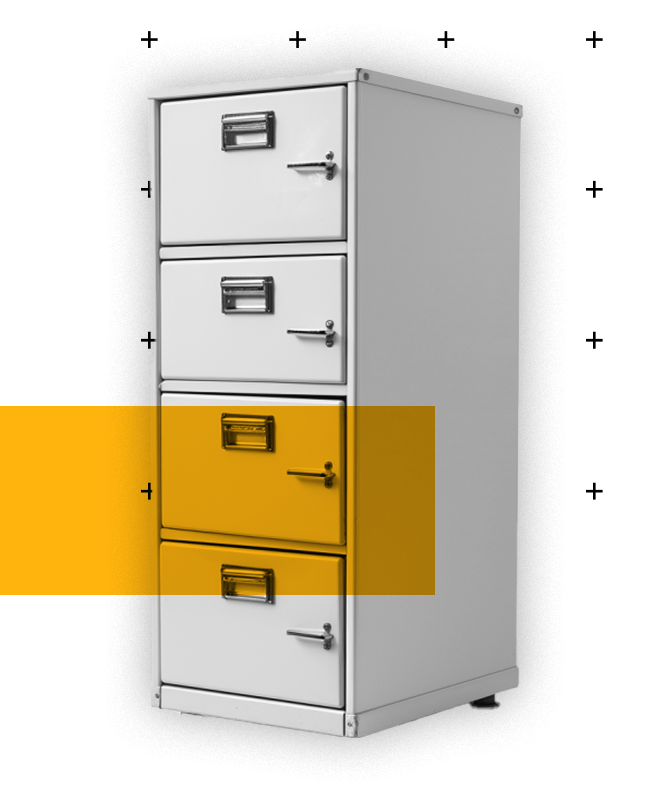Let’s be honest, implementing a new CRM is hard. Even if you know what needs to change, have you chosen how your team is going to make these changes? Probably not.
You’ve probably fallen into a rut: your team have entrenched processes that they’ve always worked to. It might not be the most effective use of your team, but everyone’s used to it.
But, while you’re changing your CRM, or implementing CRM for the first time, now is the perfect time to review your project methodology.
When discussing teams and major software changes, you’re likely to hear the terms agile and waterfall methodology used regularly. But what are they, which is best to use for CRM and how can they affect you and your team? Let’s find out.
Agile

The agile approach is centred around teamwork and time and breaks larger tasks or projects down into several pieces for your team to work on.
With good communication between you and your team, you’ll be able to meet in daily meetings, otherwise known as scrums, and discuss projects and what needs to be done. Clearly moving tasks on a kanban board, it’s simple for everyone to understand where a project is heading and what they need to do in order to complete their goal.
Ultimately, in order for this to work, each person will be working both:
- In a team. In order to break down your projects efficiently, each ‘team’ should consist of at least three people. Briefing each other daily on their progress, each team member will work collaboratively in order to complete a project.
- Independently. While each person works within a team, they will work on their own tasks and then feedback to the group each morning with their progress and capacity for the week. Although they are in a ‘team’, this does not mean that every task is one that group members should complete together.
In short, working as a team, each member works on their own specific task to complete the larger group puzzle.
While some tasks seem large and overwhelming, the agile approach breaks tasks down into bite-sized chunks, giving your team a rough estimation of how long they should take. Although this is a typically fast-moving working environment, as there is no defined ‘due’ date for projects, they can overrun.
Waterfall
Unlike the agile approach, the waterfall methodology is systematic and progresses through six steps:

- Conception - you and your team will come up with the idea for a new segment for your CRM. This is likely born from a previously defined issue, shown through your data.
- Analysis - after you define what needs to be done, see if your concept will benefit the efficiency of your process for prospective clients or internal staff.
- Design - with your wider team, create a plan for what needs to change. Decide how this will look, what steps will need to happen, and how this will benefit your different buyer personas.
- Construction - whether it’s with the sales, marketing, or IT department, construct the new product. From site design to your sales process, work with your team to create a new outlook. If you’re using new software, it’s also important to ensure that your team are up to scratch here. Think they’re not quite there? Deploy new training strategies to make sure everyone’s using the system correctly.
- Testing - with your own team and with a selection of clients, go through your new product. Figure out what your persona would like, dislike, and if there are any issues you need to fix before it goes live.
- Implementation - once it’s finally done, you’ll be ready to roll out your CRM by a clearly defined date.
Ultimately, this clearly defined framework can really help you and your team if you struggle with communication. As one step can’t start until the next is completed, this methodical process will ensure that everyone is on the same page.
One drawback of this approach, however, is that you need to define in advance what needs to be done. If you realise during the construction phase something that has been missed with the analysis, you will need to wait until the testing phase for feedback and see if your issue is still going to affect the end result.

three implementation approaches
Like the sound of the waterfall approach but want to take some ideas from agile? Well, although the definitions of agile and waterfall are clearly defined, when implementing these into your own team you can take a more fluid approach.
These can be implemented in multiple ways, but three popular examples are:
The big bang
Following a more waterfall-led approach, this method requires you to define, document, and delegate your requirements for your CRM launch.
Breaking your departments down into teams, allowing them to work on projects independently and feeding back their progress on set dates. A clear, defined timeline will allow you to achieve the biggest transformation compared to other approaches, helping you to reach a minimum viable product in the shortest amount of time possible.
Ultimately, this is also the biggest risk as, like the waterfall method, you will need to fully articulate all of your requirements upfront. There is no room for flexibility or change in your plans once this has begun development.
Customer journey Areas
This methodology is based on the pain points highlighted in your customer journey map and follows your marketing, sales, and services department.
Ultimately, by focusing on the issues within your customer’s journey, you will be able to have a high immediate impact on potential clients.
As this is centred around the client’s issues, it can be rolled out one of two ways:
- Forwards - if your buyer persona is experiencing issues at the beginning of the journey, work forwards through the buying process and create a smooth transition for them.
- Backwards - if you are experiencing a large drop off towards the end of their journey, work from your services department, through sales, and then through marketing.
While this is an effective approach as it benefits your clients, you are also dependent on addressing other issues in your customer journey. As you work through issues in sales, for example, this could negatively impact your services teams. You will need to have strong collaboration and communication between departments, making this implementation slower.
Organisational Unit
This approach allows you to deploy change one area at a time. Depending on how your business is structured, this could be by department, product area, site, or region.
The benefit of this approach is that during your development, you will create a 'template' for all other units to follow. This can then be refined as the process goes on, ensuring your organisation is meeting the precise needs of each business area.
While this is a commonly adopted approach, it can take time to fully implement change and iron out any creases before moving on to your next unit of focus. It's also important to note that during the implementation phase, some parts of your businesses will be following 'old' processes while others are following 'new'. This can create some friction internally if not dealt with accordingly.
Read our case study to find out how our CRM implementation helped Bright Direction Training ensure that customer demands were efficiently met and more time could be spent crafting a positive customer-business relationship.
Which shall I choose?
There’s no right or wrong answer when it comes to implementation techniques. You need to decide what works for your team and will provide the best experience for your customer.
Although you might not experience this change until later on in your CRM implementation process, you will need to define this during stage 2.
Much like CRM implementation, your development methodology will need constant reviewing, ensuring that this is right for you and your team in the beginning stages of implementation.
During your implementation process, whichever methodology you choose to deploy, you still need to achieve a minimum viable product to ensure your CRM works correctly. This is especially important if you are replacing an existing system, as although you may prefer an agile approach for your team, ultimately you need a waterfall or big bang implementation during the first few months to get the ball rolling.
Ultimately, while there is a lot of change happening in your organisation, with a HubSpot CRM, your entire process will be simplified. With a low code environment, the complication has been taken out of inbound marketing, offering you a streamlined view of your results. But in order to make sure it’s working effectively, you need to make sure your team is working hard together to achieve results.
Read our 5-stage HubSpot Implementation playbook here to implement HubSpot effectively for business growth.








.png?width=115&height=183&name=sade%201%20(1).png)